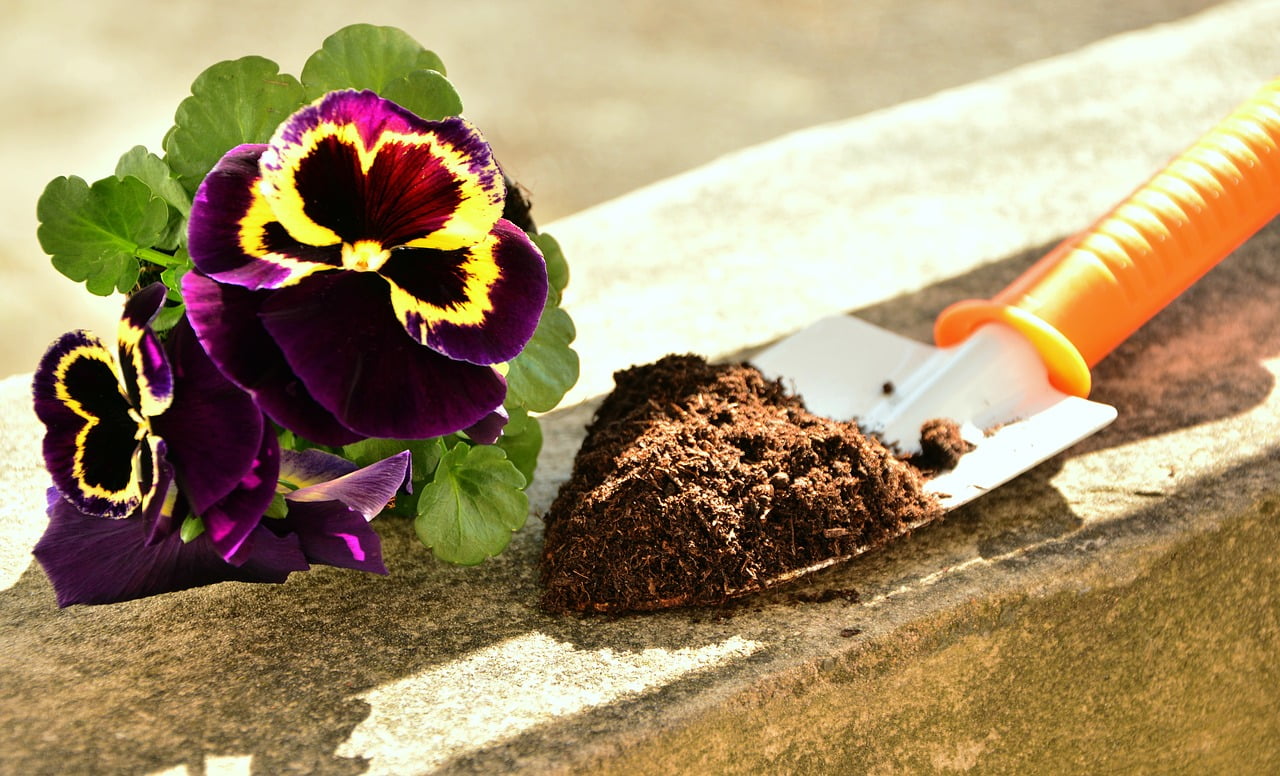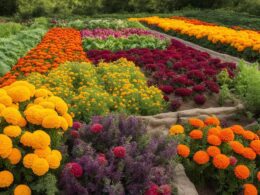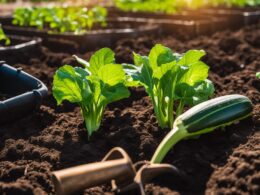Quick Takeaways
- Xeriscaping is a landscaping approach that minimizes water usage while creating an attractive and sustainable outdoor space. It can reduce landscape water usage by up to 50% when compared with traditional lawns, making it ideal for regions experiencing droughts or strict watering restrictions.
- Native plants are an excellent choice for xeriscaping, as they have adapted to the local climate, soil conditions, and environmental factors over time. Drought-resistant options like lavender, agave, sage, and evergreen trees such as acacia and Callistemon are also suitable choices.
- Proper watering techniques like drip irrigation systems, and mulching soil improvement practices help support healthy plant growth while conserving water resources over time. Grouping plants with similar water needs together in hydro zones makes optimizing water usage more effective. Incorporating efficient irrigation systems and rainwater harvesting techniques further conserves water resources while reducing costs of watering plants.
Understanding Xeriscaping And Its Benefits
Xeriscaping is a unique landscaping approach that aims to minimize water usage while crafting an attractive and sustainable outdoor space. As a result, it has become increasingly popular among eco-conscious homeowners who desire beautiful yards without contributing to unnecessary water waste. There are several key benefits of xeriscaping; one primary advantage is the considerable savings in terms of water consumption. A well-designed xeriscape can reduce your landscape’s water usage by up to 50% when compared with traditional lawns which makes it perfect for regions experiencing frequent droughts or strict watering restrictions. Moreover, since xeriscape plants are often native or adapted for dry climates, they require less maintenance like mowing, fertilizing, or pest control efforts – leaving you more time to enjoy their beauty instead of laboring over them.Types Of Xeriscape Plants For Low Water Landscaping
Learn about native plants for your region, drought-resistant options like Lavender and Agave, and evergreen trees such as Acacia and Callistemon that can thrive in low water landscaping.Native Plants For Your Region
Incorporating native plants in your xeriscaping design is an excellent way to create a sustainable and low-maintenance landscape. Native plants are species that have adapted to the local climate, soil conditions, and other environmental factors over thousands of years. Selecting native plants for your region not only conserves water but also promotes biodiversity by providing habitat for local wildlife. For example, if you live in New Mexico, consider utilizing the New Mexico Plant list as a guide to pick from drought-resistant plant varieties such as yucca, penstemon or salvia that thrive in arid climates while saving water.Drought-resistant Options Like Lavender, Agave, And Sage
Incorporating drought-resistant options such as lavender, agave, and sage into your xeriscape garden is a smart move for both aesthetics and functionality. These plants are not only stunning in appearance but also help conserve water due to their low water requirements. Agave and sage are other fabulous additions to your low-maintenance landscape. Agaves provide striking architectural elements with their bold shapes and colors while serving as natural habitat for birds and pollinators. Sage is a versatile herb that adds texture to the garden while providing valuable seasoning for cooking dishes at home.Evergreen Trees Like Acacia And Callistemon
Evergreen trees like Acacia and Callistemon are excellent choices for xeriscape plantings, particularly in arid regions. These types of trees provide year-round shade and maintain their foliage even in drought conditions. Their deep root systems help them to access water from deeper soil layers, making them more resilient than other tree species that require more frequent watering. Incorporating evergreen trees into a xeriscape design not only adds visual interest but also provides important ecological benefits such as helping to prevent erosion, providing shelter for wildlife, and improving air quality.Best Plants For Xeriscaping
Discover the top xeriscape plants, including succulents like agave and aloe vera, edible herbs such as lavender and thyme, and perennials like coneflower and yarrow.1. Succulents: Agave, Sedum, And Aloe Vera
 I absolutely adore succulents, specifically agave, sedum, and aloe vera. These drought-tolerant plants are perfect for xeriscaping due to their incredible ability to conserve water.
Their thick leaves store water, allowing them to survive long periods without being watered. Sedums like the “Autumn Joy” variety are stunning in xeriscapes with their rosy pink flowers that bloom from late summer into fall.
Agaves come in various shapes and sizes and can serve as statement pieces in any garden or landscape design.
Incorporating these succulent companions among taller succulents such as aloe and agave produces an attractive contrast of texture and color while still maintaining low watering needs.
In addition to looking good in a landscape, succulents’ specialized root systems allow them to grow deep roots, making it easier for them to absorb moisture when there is an ample supply of rainwater available.
I absolutely adore succulents, specifically agave, sedum, and aloe vera. These drought-tolerant plants are perfect for xeriscaping due to their incredible ability to conserve water.
Their thick leaves store water, allowing them to survive long periods without being watered. Sedums like the “Autumn Joy” variety are stunning in xeriscapes with their rosy pink flowers that bloom from late summer into fall.
Agaves come in various shapes and sizes and can serve as statement pieces in any garden or landscape design.
Incorporating these succulent companions among taller succulents such as aloe and agave produces an attractive contrast of texture and color while still maintaining low watering needs.
In addition to looking good in a landscape, succulents’ specialized root systems allow them to grow deep roots, making it easier for them to absorb moisture when there is an ample supply of rainwater available.
2. Edible Herbs: Lavender, Sage, And Thyme
As someone who loves cooking and gardening, it’s no surprise that I’m a big fan of using edible herbs in my xeriscaping. Not only do these plants add beautiful colors and aromas to your landscape, but they also provide tasty additions to your meals. Lavender is one of my go-to options for xeriscaping, as its purple flowers are not only stunning but can be used in everything from teas to desserts. Sage is another great choice, with its silvery leaves and earthy flavor making it perfect for savory dishes like stuffing or roasted meats. And let’s not forget thyme – this small-leafed plant has been used for centuries to season everything from soups to sauces and makes a great addition to any herb garden or xeriscape bed.3. Perennials: Coneflower, Yarrow, And Salvias
I love planting perennials in my xeriscape garden, and some of the best ones to choose from are coneflowers, yarrow, and salvias. Coneflowers are one of my favorites because they come in a range of colors, including pink, purple, and white. They attract bees and butterflies to your garden while providing you with beautiful blooms that last for weeks on end. Yarrow is another great option; it’s drought-tolerant and can grow up to three feet tall. Yarrow also comes in different shades ranging from light yellow to deep red, making it an excellent addition to any xeric landscape design. These perennials are perfect for anyone looking for low-maintenance gardening options as they require minimal watering once established.Can I Grow Edible Plants in a Xeriscaped Garden?
Yes, it is possible to grow edible plants in a xeriscaped garden by utilizing the concept of edible landscaping in water-scarce areas. This approach focuses on selecting drought-tolerant and water-efficient plants that can thrive with minimal irrigation. Incorporating herbs, fruits, and vegetables that can withstand arid conditions allows you to enjoy both a visually appealing xeriscaped garden and a bountiful harvest of edible delights.









